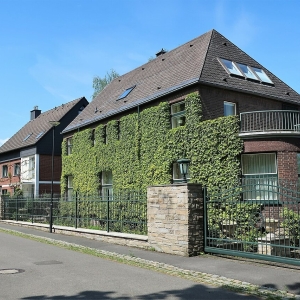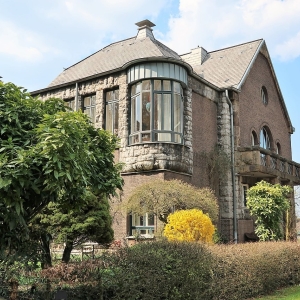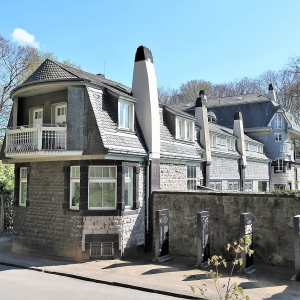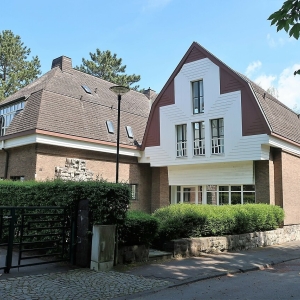
Gartenstadt Hohenhagen
Hagen, Germany
An artist colony in the Ruhr area, influenced by the garden city movement.
| Garden City Type: | Mixed (housing association / municipality / other) |
| Country: | Germany |
| City: | Hagen |
| Years of construction: |
1909 Start construction
|
| Initiator/client: | Karl Ernst Osthaus |
| Architect or related: |
Peter Behrens Henry van de Velde Jan Lauweriks |
| Heritage status: | No |
| General condition of Garden City: | Good condition |
General description
The garden city of Hohenhagen was founded in 1909 by the Hagen banker and patron Karl Ernst Osthaus (15 April 1874 – 27 March 1921). Osthaus tried to realise his vision in his hometown to let “beauty be the main driving force of life again". He wanted to make Hagen a cultural highlight of the Ruhr region, which led, amongst others, to the creation of an artist's colony based on the garden city principles. Osthaus wanted Hohenhagen to provide a counterpoint to the industrialisation of the landscape. Osthaus engaged a number of renowned artists and architects to realise his idea, like Peter Behrens, Henry van de Velde and Jan Lauweriks.
The plans were initially based on the construction of sixteen villas. The group of houses on the northern side of Stirnband was built by Lauweriks; Behrens designed and built three houses on Haßleyer Straße. The highlight is Hohenhof, built between 1906 and 1908 by Henry van de Velde, which became the residence of Osthaus himself. It nowadays houses the Osthaus Museum.
General description
Hohenhagen is located in today's Eppenhausen district. All the houses are individually designed, but they form a unity through the system used, through lines that are repeated from one building to the next and through recurring materials and colours: brick, natural stone, and wood. The projecting and recessed single and semi-detached houses are connected by a continuous ridge height, the coherence of which is reinforced by the related gables.
Sources
- Website URL
Wikipedia [in German]
- Website URL
archINFORM [in German]
- Website URL
Fremde Impulse – Baudenkmale im Ruhrgebiet: Hagen as a centre of an European network of modernity






